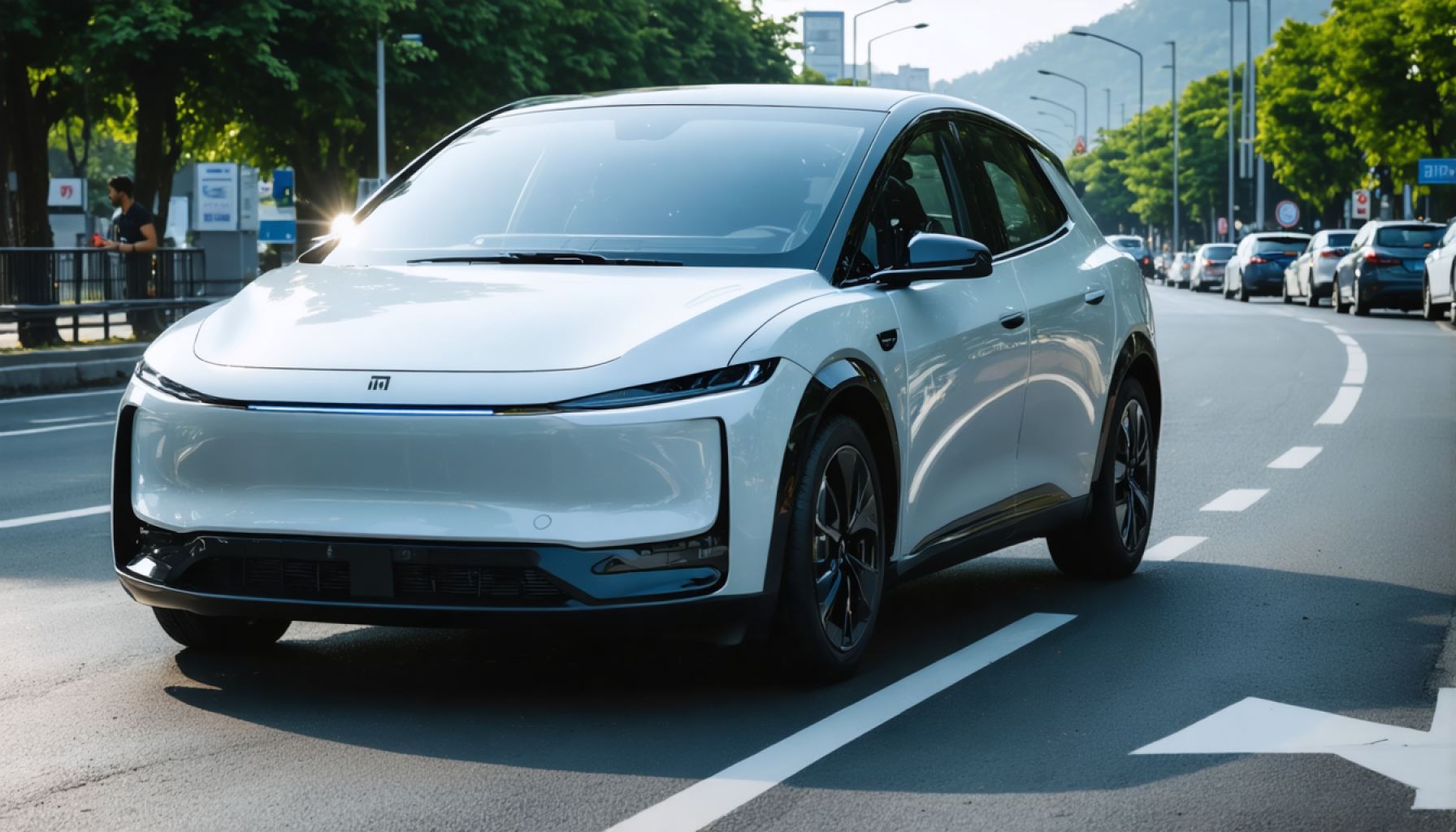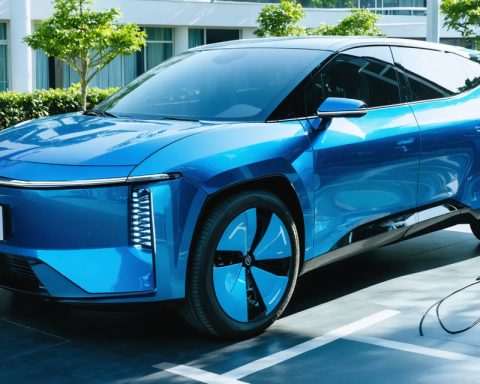- A serious accident involving a Xiaomi SU7 EV on a Chinese expressway has sparked debate about autonomous driving safety and innovation.
- This incident emphasizes the challenges new automotive players face and questions the reliability of current advanced driver-assistance systems.
- There is a growing call for a robust regulatory framework to ensure safety through stringent testing across various driving conditions.
- The crash highlights the complexity of developing software that can adapt to unpredictable conditions, stressing the need for transparency and accountability.
- For Xiaomi, this represents a critical moment to reassess its strategy and demonstrate a commitment to safety, influencing other tech firms in the automotive industry.
- The broader implications stress the need for balancing innovation with safety to maintain public trust and drive the future of smart driving technology.
On a bustling Chinese expressway, a dramatic collision involving a Xiaomi SU7 electric vehicle has ignited a firestorm of debate over the future of autonomous driving technology. As Xiaomi ventures further into the automotive world, this incident serves as both a stark reminder of the challenges faced by new entrants in the sector and a catalyst for broader discussions about safety and innovation.
In the heart of this unfolding drama is the reliability of smart driving software. The recent accident, resulting in injuries, has not only put a spotlight on Xiaomi’s ambitions but also on the readiness of autonomous vehicles. Industry insiders and consumers alike are questioning whether current advanced driver-assistance systems are equipped to safely navigate real-world conditions.
Urgency for Regulation and Safety Standards
Critics are calling for a robust regulatory framework to ensure passenger and pedestrian safety, highlighting the critical need for stringent testing under various conditions. The incident underscores the complexity of developing software that can adapt to unpredictable human behavior and environmental variables—a challenge that continues to perplex engineers striving for perfection in autonomous technology.
With the automotive sector undergoing a seismic shift—driven by major tech companies—it’s clear that public trust hinges on transparency and accountability. In the aftermath of the crash, discussions are gaining momentum on how best to implement and enforce uniform safety standards across the industry.
For Xiaomi, what began as an exciting foray into electric vehicles now demands a serious reevaluation of strategy and execution. As investigations unfold, the tech giant is under pressure to demonstrate its commitment to safety and innovation. How Xiaomi responds could set a significant precedent for other tech firms eyeing the automotive market.
The Road Ahead
The implications of this crash reach far beyond the immediate fallout. They serve as a crucial reminder that the journey toward fully autonomous vehicles is fraught with challenges that demand rigorous scrutiny and collaboration. As the industry moves forward, balancing innovation with safety will be essential—not just for technological progress, but for the continued trust and confidence of the public.
In this dynamic landscape, the question remains: Can tech companies like Xiaomi rise to the occasion and emerge as leaders in a market that demands both cutting-edge technology and unwavering commitment to safety? As the dust settles, this incident may prove pivotal in shaping the trajectory of smart driving technologies worldwide.
Is Xiaomi’s Autonomous Driving Ambition All It’s Cracked Up to Be?
Exploring Xiaomi’s Foray into Autonomous Driving
The recent collision involving a Xiaomi SU7 electric vehicle on a busy Chinese expressway has thrust the company into the spotlight, sparking debates about the future and safety of autonomous driving technology. As Xiaomi joins the ranks of tech giants entering the automotive industry, this incident serves as a crucial inflection point.
Key Facts About Xiaomi’s Autonomous Driving Technology
1. Xiaomi’s Position in the Autotech Industry: Xiaomi announced its plans to enter the electric and autonomous vehicle market in March 2021, aiming for mass production by 2024. The company is investing $10 billion over the next decade to secure its place in the competitive auto-tech space.
2. The SU7 Model: The SU7, an emblem of Xiaomi’s automotive ambitions, integrates advanced driver-assistance systems (ADAS) that control acceleration, braking, and steering under certain conditions, although it is still in the testing phase.
3. Autonomous Safety Concerns: The accident raises significant concerns about the reliability of autonomous vehicle software—particularly, its ability to handle complex, real-world scenarios involving unpredictable variables, such as erratic human actions and unexpected environmental conditions.
How-To Steps for Improving Autonomous Vehicle Safety
1. Iterative Testing: Conduct comprehensive real-world tests in diverse environments to improve AI learning and system adaptability.
2. Enhance Sensor Systems: Integrate advanced sensor technologies, including LIDAR and thermal imaging, to improve environmental awareness.
3. Regulatory Compliance: Work closely with regulatory bodies to ensure compliance with emerging safety standards and contribute to shaping these standards.
4. User Education: Provide training and resources for users of autonomous vehicles to understand system limitations and optimize their safety features.
Real-World Use Cases and Market Forecast
– Urban Applications: Autonomous vehicles are being rolled out in controlled urban environments where driver assistance can significantly reduce traffic congestion and enhance public transport systems.
– Industry Growth: With the global autonomous vehicle market projected to reach a valuation of over $556 billion by 2026, according to Allied Market Research, companies like Xiaomi are investing heavily to accelerate innovation and capture market share.
Limitations and Future Predictions
– Complex Algorithm Adaptation: Current technology struggles with interpreting and predicting unpredictable or erratic behaviors, an area of intense research focus.
– Public Trust and Regulation: Building consumer trust remains a challenge as public opinion sways heavily on perceived safety performance. Regulations will likely tighten, emphasizing the necessity for unified safety benchmarks.
Safety and Sustainability Insights
– Sustainability: As electric vehicles often power autonomous technologies, they contribute to reducing carbon emissions, aligning with global environmental goals.
– Ethical Considerations: Autonomous vehicles must be programmed to make ethically sound decisions in unavoidable collision scenarios, requiring in-depth ethical frameworks.
Actionable Recommendations
– For companies like Xiaomi, iterative testing and development of more advanced sensor suites can significantly enhance system reliability.
– Regulatory alignment and active participation in forming industry standards are critical to gaining public trust.
– Consumers and stakeholders can expect more conservative rollouts focusing on densely populated, well-mapped urban areas.
Conclusion
While the road to widespread adoption of autonomous vehicles is filled with challenges, technological advancements, bolstered by significant R&D investments, continue to drive industry growth. However, maintaining a clear focus on safety, transparency, and consumer education will be paramount for companies like Xiaomi to succeed in this dynamic arena.
For more insights into Xiaomi’s technology innovations, visit the Xiaomi main website.










